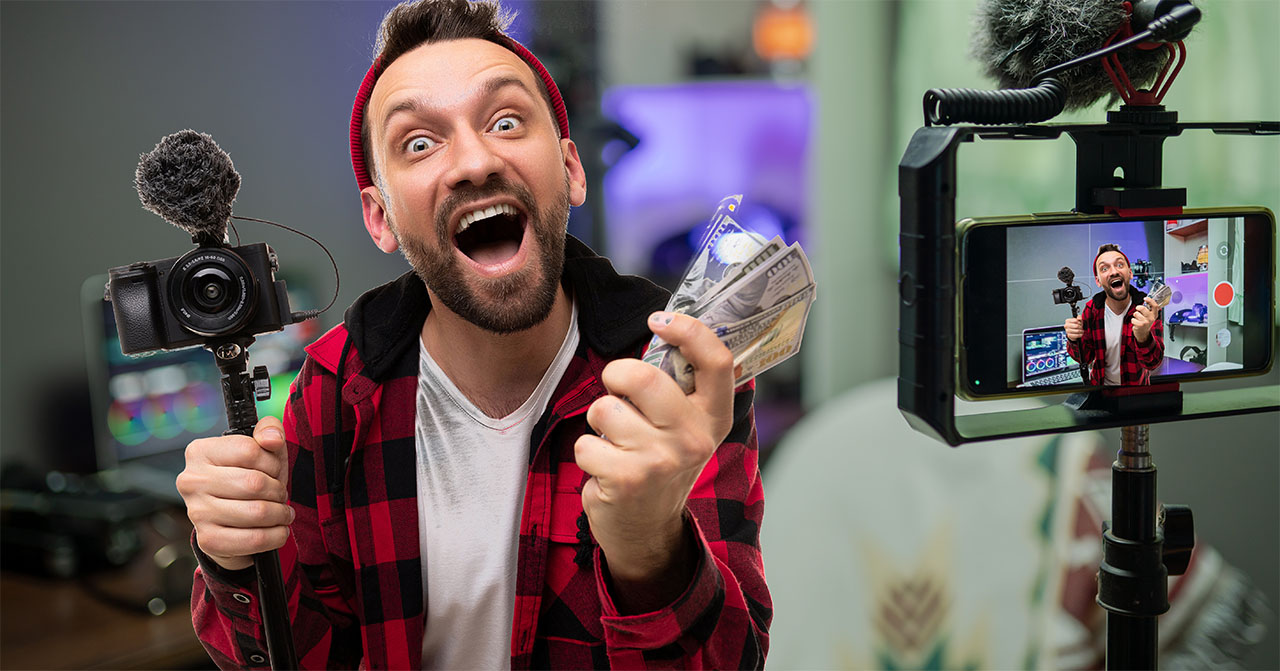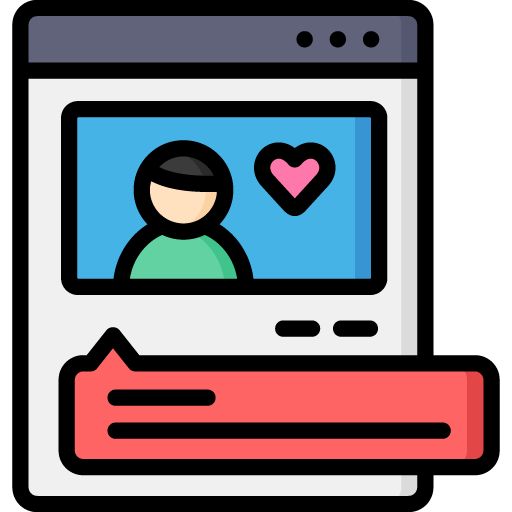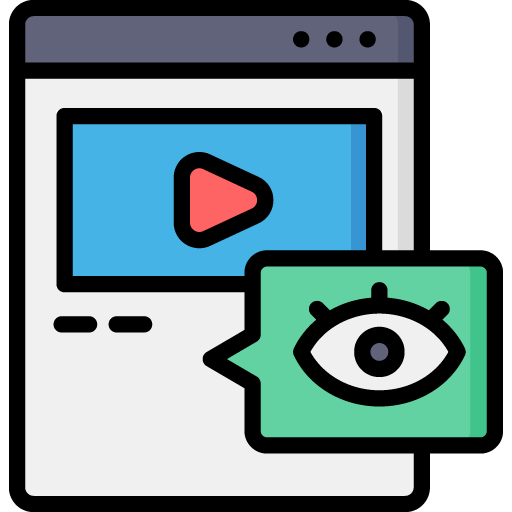Overview of YouTube’s Monetization Policies and How to Set Up AdSense for Earning Revenue
Introduction to YouTube Monetization:
Overview of YouTube’s Monetization Policies and How to Set Up AdSense for Earning Revenue
YouTube has evolved into more than just a platform for watching and sharing videos; it’s now a thriving ecosystem where creators can turn their passions into profitable careers. YouTube monetization, specifically through Google AdSense, is one of the key methods for earning revenue on the platform. If you’re interested in making money from your YouTube channel, understanding how YouTube monetization works and how to set up AdSense is essential.
This guide will walk you through YouTube’s monetization policies, the requirements to become eligible for monetization, and a step-by-step process for setting up AdSense and optimizing your revenue streams.
Monetization on YouTube allows content creators to earn money from their videos by displaying ads, offering channel memberships, receiving donations through Super Chat, and even earning revenue through YouTube Premium subscriptions. However, YouTube doesn’t allow just anyone to start monetizing right away. Creators need to meet certain requirements and follow specific policies to ensure their content is suitable for monetization.
The backbone of YouTube’s monetization system is the YouTube Partner Program (YPP), which enables creators to monetize their content through ads powered by Google AdSense. Whether you’re just starting your channel or looking to scale it up, mastering YouTube’s monetization process is key to long-term success and revenue generation.
Eligibility Requirements for Monetization
Before you can monetize your content, you must meet YouTube’s eligibility requirements, which are designed to ensure that only quality content and trusted creators are part of the program. The eligibility criteria revolve around the YouTube Partner Program (YPP), the gateway to earning revenue on YouTube.
The YouTube Partner Program (YPP)
The YouTube Partner Program is a platform feature that allows creators to earn revenue by displaying ads on their videos, offering memberships, or using features like Super Chat. Being part of the YPP grants creators access to the full range of monetization tools available on YouTube.
Basic Requirements to Join the YPP
To be eligible for the YPP, your channel must meet these key criteria:
- 1,000 Subscribers: You need at least 1,000 subscribers on your channel.
- 4,000 Watch Hours: Your channel must accumulate 4,000 valid public watch hours over the past 12 months.
- AdSense Account: You need to set up an AdSense account and link it to your YouTube channel to receive revenue.
- Community Guidelines and Copyright Compliance: Your channel must adhere to YouTube’s community guidelines and copyright rules.
- Two-Step Verification: You must enable two-step verification for security purposes.
Once your channel meets these criteria, you can apply for YPP through YouTube Studio. YouTube will review your channel to ensure compliance with all guidelines, which typically takes a few weeks.
Understanding YouTube Monetization Policies
To maintain monetization status and maximize revenue potential, it’s crucial to follow YouTube’s monetization policies. Violating these policies can lead to demonetization, video takedowns, or even the termination of your account.
Ad-Friendly Content Guidelines
YouTube’s ad-friendly content guidelines outline what type of content is eligible for ads. To ensure that your videos are monetizable, avoid content that includes:
- Hate speech or discrimination
- Violence or graphic content
- Sexually suggestive content
- Harmful or dangerous acts
For a more detailed overview, you can check YouTube’s official guidelines on ad-friendly content.
Copyright and Community Guidelines Compliance
Content creators must ensure that their videos do not infringe on the intellectual property rights of others. Using copyrighted music, clips, or images without permission can result in copyright strikes, demonetization, or video removal. To stay compliant, only use royalty-free or licensed music and visuals.
Adhering to YouTube’s Community Guidelines is equally important. This includes ensuring your content doesn’t promote harmful behavior, misinformation, or inappropriate content.
Setting Up AdSense for Your YouTube Channel
AdSense is YouTube’s advertising platform, allowing creators to monetize their content by displaying ads on their videos. Once your channel is accepted into the YouTube Partner Program, linking your AdSense account is the next crucial step.
What is Google AdSense?
Google AdSense is an advertising platform that allows content creators, website owners, and publishers to earn money by displaying ads on their digital properties. In the context of YouTube, AdSense delivers ads to your videos and pays you a portion of the revenue generated from those ads.
Step-by-step Process for Linking AdSense to YouTube
Here’s how to set up AdSense for your YouTube channel:
- Sign in to YouTube Studio: Go to YouTube Studio and click on the Monetization tab.
- Apply for YPP: Once you meet the eligibility criteria, apply for the YouTube Partner Program by clicking the “Start” button under the “Review Partner Program terms” section.
- Create or Link AdSense Account: During the application process, you’ll be prompted to create a new AdSense account or link an existing one.
- Submit for Review: After linking AdSense, submit your application for review. YouTube will notify you once you’re approved for monetization.
- Enable Monetization for Videos: Once approved, go to the Videos section of YouTube Studio to turn on monetization for individual videos.
Once your AdSense account is set up, YouTube will automatically place ads on your eligible videos, and you can start earning revenue.
Types of Ads and Revenue Models
Once you’ve enabled monetization on your channel, you’ll need to understand the different types of ads available on YouTube and how revenue is calculated.
Types of Ads on YouTube
- Display Ads: These ads appear beside the video and are shown to viewers watching on desktop.
- Overlay Ads: Semi-transparent ads that appear on the lower 20% portion of your video.
- Skippable Video Ads: Ads that viewers can skip after 5 seconds.
- Non-Skippable Video Ads: Ads that viewers must watch in full (typically 15–20 seconds).
- Bumper Ads: Non-skippable ads lasting up to 6 seconds.
- Sponsored Cards: These ads display relevant products that viewers may be interested in based on the content of the video.
How Revenue Is Calculated
YouTube pays creators a portion of the ad revenue generated from views on their videos. The key metric is CPM (Cost Per Mille), which refers to the cost an advertiser pays for 1,000 ad impressions. However, YouTube takes a 45% cut of the ad revenue, leaving creators with 55%.
Revenue is also influenced by factors like viewer location, video length, and the types of ads shown. Additionally, if viewers use YouTube Premium, creators earn a share of the subscription revenue based on watch time.
Additional YouTube Monetization Options
Aside from ads, YouTube offers several additional ways to earn money directly from your audience.
Channel Memberships
Once you reach 30,000 subscribers, you can enable Channel Memberships, allowing viewers to pay a monthly fee for access to exclusive perks like custom emojis, badges, and members-only content.
Super Chat and Super Stickers
During live streams, your audience can purchase Super Chats and Super Stickers to highlight their messages or comments. This can be a fun and engaging way to generate revenue while live streaming.
YouTube Premium Revenue
When a YouTube Premium user watches your content, you earn a portion of their subscription fee. This revenue is distributed based on watch time, meaning the more premium users watch your content, the more you earn.
Optimizing Your YouTube Channel for Monetization
Achieving success through monetization requires not only meeting YouTube’s guidelines but also optimizing your content and strategy to maximize earnings.
Creating Ad-Friendly Content
Ensure your content adheres to YouTube’s ad-friendly guidelines. Keep controversial topics, profanity, and potentially offensive material to a minimum to maximize your revenue potential.
Maintaining Consistency and Audience Engagement
Consistently posting high-quality content that engages your audience will help keep viewers returning to your channel. Increased engagement, such as comments, likes, and shares, helps boost your visibility on the platform and grow your subscriber base.
Understanding Analytics for Growth
YouTube Analytics provides valuable insights into which types of videos generate the most revenue, audience engagement metrics, and viewer demographics. Use this data to refine your content strategy and optimize future videos for higher engagement and ad revenue.
In conclusion, YouTube monetization offers a wealth of opportunities for content creators to earn revenue by sharing their passion, expertise, and creativity with the world. However, it is essential to understand the platform’s policies, eligibility requirements, and various monetization methods to maximize your earning potential.
Starting with the YouTube Partner Program, creators can begin earning revenue through ads once they meet the basic requirements. As your channel grows, exploring additional monetization options like Channel Memberships, Super Chat, and YouTube Premium can help diversify your income streams. Setting up and linking your AdSense account to YouTube is a critical step in the process, but creating ad-friendly content and maintaining compliance with YouTube’s policies is key to sustaining monetization.
By focusing on creating consistent, engaging, and optimized content, you can build a loyal audience and increase your chances of long-term success on the platform. Analytics will provide ongoing insights that help you refine your approach, understand what resonates with your audience, and ultimately grow your channel in both reach and revenue. As you build your channel, staying informed on YouTube’s evolving policies and continuously improving your content will pave the way to monetization success.
Now that you have an in-depth understanding of how YouTube monetization works, you’re ready to take the first steps toward earning revenue from your videos and growing your channel into a successful brand!







 Edit Your Footage
Edit Your Footage
Leave a Reply